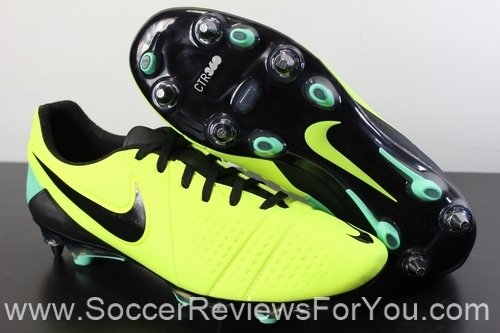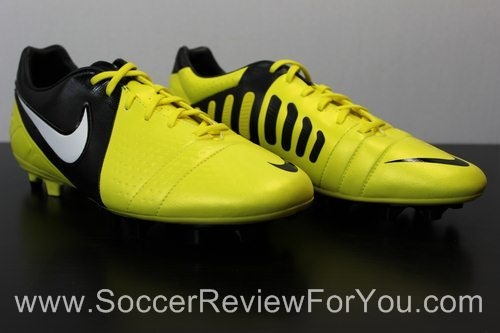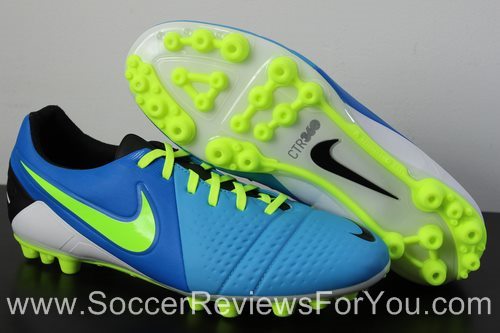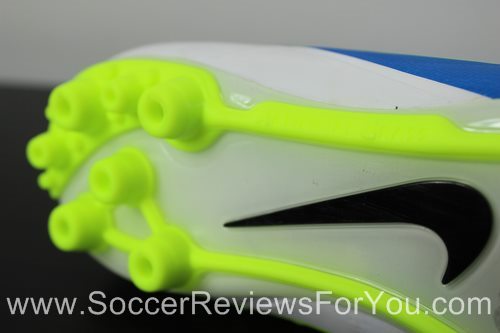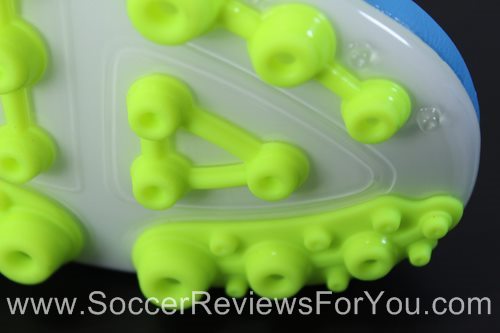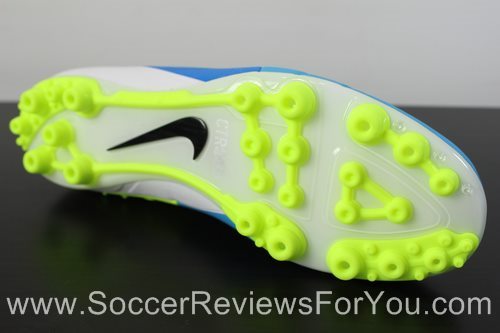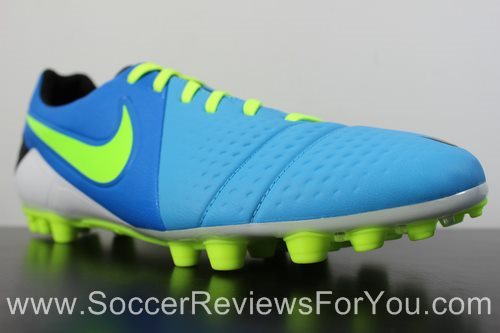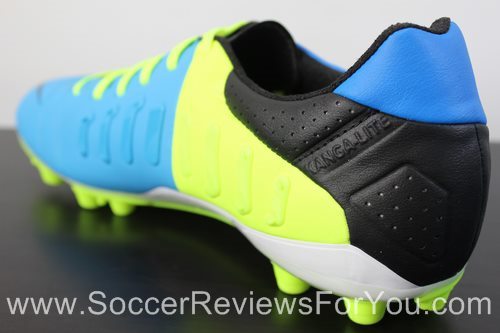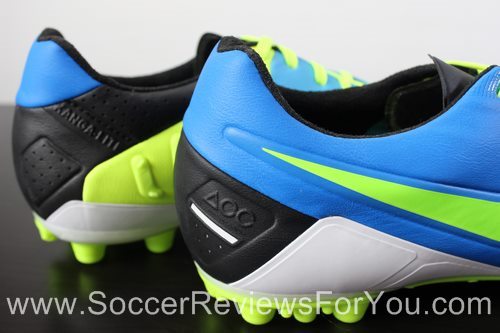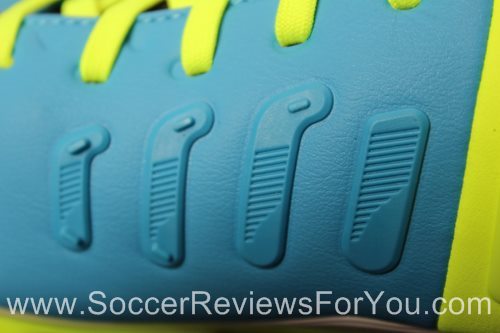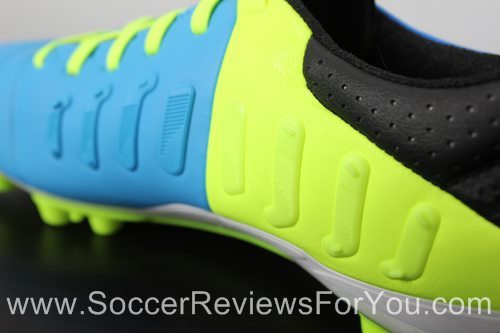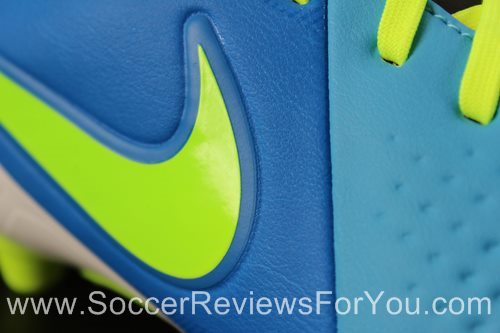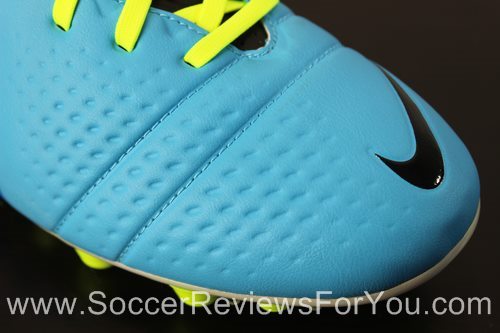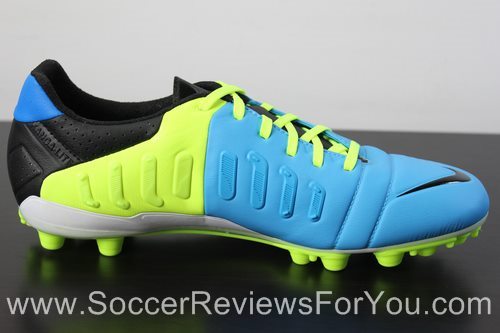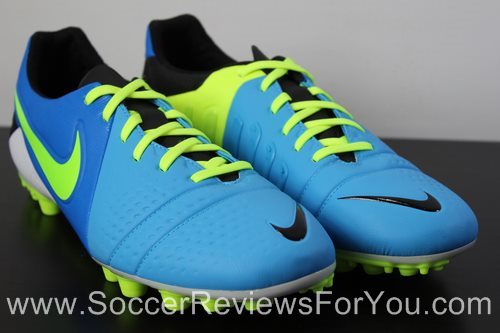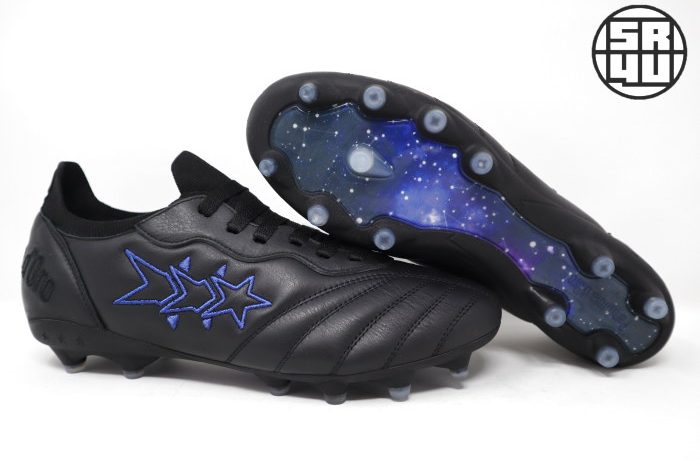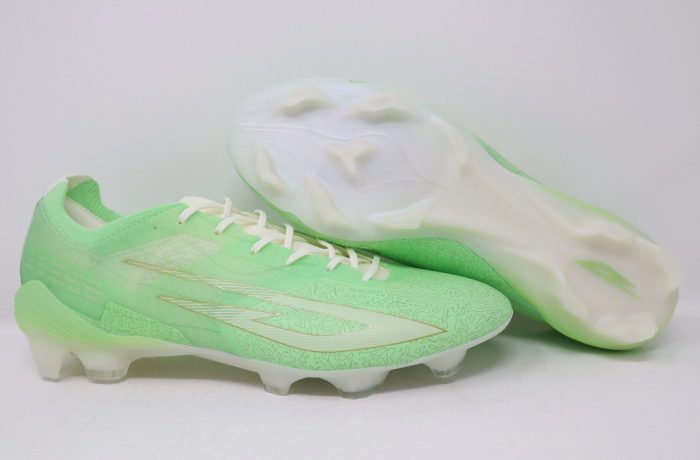Nike CTR360 Maestri III AG (Artificial Grass) Review
The CTR360 Maestri 3 series from Nike was the first to bring the idea of a “control” boot to the world, and did it ever catch on. The Maestri also brought us the very first version of Kanga-Lite, an incredible synthetic material, made to feel like natural leather, with the added benefits of a synthetic, allowing for the best of both worlds. The differences between the first and second Maestri were very subtle, with the second model being simply a sleeker version of the original design. With the release of the Maestri III, it is plain to see that Nike have completely overhauled what many already considered to be the best. I was skeptical of the design change at first, but after having the opportunity to wear the boots, I can tell you that the Maestri III is honestly one of my new favourites, and long time fans of the Maestri will not be disappointed.
Comfort/Fit
As far as the fit of the shoe is concerned, not much has changed from the previous model. The most noticeable difference when it comes to the fit and comfortability of the boot is the brand new Kanga-Lite 2.0. The material that turned so many towards the use of synthetics just got better. Then new Kanga-Lite is slightly thinner, much softer, and just feels so much more like actual leather than the previous Kanga-Lite did. When you hold the shoe in your hand and run your fingers across the upper, it is almost shocking at how leather-like the upper is. The original maestri offered a leather-like feel, where as the Maestri III feels like leather. From right out of the box, the upper is nice and soft, and when you slide the shoes on your feet and pull the laces tight, the shoe hugs your foot very comfortably. The heel and ankle collar are lined completely in suede, offering a soft, comfortable feel, while also providing very good grip to hold you heel in place. The laces are still positioned on the instep, a lacing pattern pretty much exclusive to the CTR360 line, and it still does a great job of securing your foot in place. This time around, there is a memory foam insert in the tongue, so any kind of lace-bite issues that you may have had on one of the previous models will not be an issue here.
It is hard to replicate the feel of soft, natural leather through a synthetic, and up until the Maestri III, I would argue that it couldn’t be done, but this new version of Kanga-Lite is truly remarkable. While the feel is still not exactly like natural leather, it comes incredibly close, and considering the added benefits of a synthetic, it is hard to argue against, even if you are a diehard leather guy. Just like a leather shoe, the Maestri III does have somewhat of a break-in time. The shoe will feel comfortable from right out of the box, but it won’t feel like it is “your” shoe, until you give it some time to wear-in. The softer Kanga-Lite has a little more stretch to it than the previous version did, allowing a more custom fit than you would normally get from a synthetic. As far as the width of the shoe is concerned, I would classify the boot as moderately wide, allowing for the boot to fit pretty much anybody. Unless you have unusually wide feet, you should have no issues fitting comfortably in the Maestri III.
Sizing also remains the same as the previous model, fitting just a little bit differently than the other lines from Nike. They seem to fit about half a size small, so where I would normally wear a size 9US, I needed a size 9.5US in the Maestri III for a perfect fit. So if you are looking to order online, I would strongly recommend going up half a size. The Maestri III is a very comfortable shoe, and is the closest that you can get a natural leather shoe, without the shoe actually being leather.
Weight
The AG Maestri 3 weighs in at 9.2oz, which is about an ounce more than the FG version. The reasoning for the extra weight has everything to do with the AG soleplate and stud pattern, which are made from more heat resistant materials for use on AG. With that being said, the boot still feels relatively lightweight both in-hand and on feet, and will certainly not weigh you down.
Traction
With artificial grass, or AG, becoming more and more common nowadays, the type of traction pattern that you use should change too. Just to clarify, AG is the playing surface featuring plastic blades of grass, with rubber pellets scattered throughout, hence the name “artificial grass”. Right now, it is not at all uncommon to see somebody wearing firm ground soccer shoes on artificial grass, but what nobody realizes is that there are so many negatives to doing this. Not only is it potentially dangerous, due to excessive amounts of grip that can be generated from an FG stud pattern on AG that could potentially lead to some pretty severe injuries, but artificial grass will also have a major impact on the durability of your soccer shoes. So much so, that many companies are no longer providing warranties to FG shoes that have been worn on AG. The main reason for the durability issues can be attributed to the abrasiveness of AG, and when using an FG stud pattern on AG you get too much grip, causing your shoes to literally be pushed to the breaking point, generally resulting in premature sole separation. An AG stud pattern is designed to provide the same type of grip on AG that an FG stud pattern would provide on natural grass.
The studs themselves on Nike’s AG soleplate are about half the length of your average firm ground stud pattern, and are actually hollowed out, giving them the appearance of small rings. The studs themselves are not actually hard plastic either. If you look closely, you will see that the tips of the studs are made from a slightly softer rubber material, very similar to what you would find on a traditional turf soleplate, while the rest of the stud, the part that is attached to the soleplate, is made from hard plastic. The soft rubber tips allow for some extra cushioning when playing on artificial grass, and also allows for the studs themselves to have some flexibility to them. Thanks to this unique design, the studs grip the artificial grass surface really well, but don’t have that clingy feeling that you get when wearing a pair of firm ground shoes on artificial grass. Not only does this make for a great performing stud pattern, but its also much safer.
Artificial grass has the ability to cling to pretty much anything that’s not flat. The AG stud pattern from Nike has the amazing ability to provide plenty of grip when pushing off, but you still have the ability to pivot once your foot has been planted. If you’re going to be playing on artificial grass regularly, I would strongly recommend going for an AG stud pattern on your next pair of shoes.
Touch
Given that the Maestri III is designed as a “control” boot, one would expect the touch to be no less than spectacular, and that is exactly what you get. The Maestri has built a very strong reputation for offering a feel unlike any other shoe on the market, and that is mainly due to the Nike exclusive Kanga-Lite upper. The Kanga-Lite 2.0 that is used on the Maestri III improves dramatically over the previous model, offering a feel that is incredibly close to actual leather. The synthetic upper does an amazing job of providing that same level of softness that was previously found only from natural leather. The best way that I can describe it is that natural sponginess that leather has, and this version of Kanga-Lite is the only synthetic on the market that possesses this quality. So what does, the upper feel like? the simple answer is leather, it feels like leather, which is amazing. One major design change is the outside of the forefoot. Gone are the memory foam pods, which have been replaced by small indentations in the upper, which are designed to add friction against the ball. Honestly, it isn’t what I would call a noticeable element on the shoe, and it is more for looks than anything.
One new addition to the Maestri III is the ACC, all conditions control, coating on the upper. The coating is not visible, and you can’t even feel anything when rubbing your finger against the upper. It isn’t until you touch a ball that you realize that something is different about the Maestri III. The coating is designed to offer the same amount of grip, or feel, in dry and wet conditions, which is an interesting and very smart idea if you ask me. When you touch the ball, in dry conditions, for the first time, the shoe had a surprisingly abrasive feel to it. It through me off a little bit for the first half hour or so, but I soon got used to it, and began to like the feel. I also noticed that the amount of grip varied depending on the ball, where textured or dimpled balls, usually the more expensive match balls, tended to grip to the shoe a little bit more than a ball with a smooth outside surface. Like anything new, it will take a small amount of getting used too, but once you do, you won’t even notice it. As far as the performance of the upper in wet conditions, I can’t say that the feel is identical to playing in dry conditions, but there is a definite improvement in the amount of grip that you would normally get from a shoe without the ACC coating. Is it going to improve your touch in the wet? No, but it will make for slightly more confident touch on the ball in wet conditions. When they claimed an improved touch in wet conditions, I immediately thought about a shoe like the T90 Laser IV, with a completely rubber instep. If you want optimal grip in the wet, rubber is going to provide the most grip.
Another redesigned element on the Maestri III is the Pass Pad on the instep of the shoe. The element is comprised of eight individual strips of textured rubber all varying in size, shape and depth. The concept is to provide a surface that is a perfect cradle for the ball, for both passing and receiving the ball. You’ll notice that there are aggressive rubber fins starting on the outside of the element, with the fins decreasing in size until they disappear going towards the middle. This creates a very subtle rounded surface for the ball upon impact, which is a good idea. The overall feel of the element is pretty much just extra grip on the ball. There isn’t much bulk to the element itself, but the rubber does add a more solid feel against the ball. I personally am not a big fan of having very late rubber elements on my shoe, but I honestly did not mind having the rubber on the instep of the Maestri III. It makes for a solid feel when passing the ball, and upon receiving the ball, I like having that little bit of extra grip. Overall, the design of the Maestri III proves that you can design a shoe around “touch”. While I don’t feel like the Maestri III will improve your touch, nor will any shoe on the market improve any type of skill, I can say that the touch of the Maestri III is very, very good.
Shooting
The Maestri III offers a very solid feel for striking the ball. The upper itself is very reminiscent of natural leather, so the feel that you get against the ball is nothing all that unique. The ACC coating is not abrasive enough to provide any noticeable amount of grip when striking the ball either. One stand out for me is the rubber element featured on the instep, with the rubber elements providing a nice solid surface while also proving a little bit of extra grip when striking the ball with the instep. The soleplate also provides plenty of stiffness when striking the ball, giving the shoe a very solid feel. Overall, the Maestri will not disappoint when striking the ball.
Protection
The Maestri III offers an average amount of protection. The padded upper will provide plenty of protection for pretty much anybody. If you are worried about your safety out on the field or just want to feel like you are covered just in case, the Maestri III will definitely provide that. One other thing to note is that the Maestri III is above average in protection if you consider how light the shoe is. The only other shoes that provide that much protection and are equally as light are the Puma Powercat 1.12 SL and the Adidas adiPure 11Pro SL.
Durability
The beauty of Kanga-Lite is that it has that premium leather feel, without the required maintenance of a natural material. Kanga-Lite requires no type of treatment to keep it soft, keeps its shape very well, absorbs little water and dries quickly. All of the flaws of leather that can have impact on the durability of the shoe, are not a concern when it comes to synthetics. Keep in mind that the AG version of the Maestri 3 is intended for use on artificial grass playing surfaces, and nothing else. Using the AG stud pattern on natural grass will not only lead to poor performance in terms of traction, but could also have a major impact on the durability of the boot.
The Verdict
Nike took a big risk in changing a shoe that arguably did not need changing, but what they managed to produce is truly fantastic product. I always liked the Maestri series, but it was never a shoe that I personally wanted to wear. The Maestri III changes that, and is one of very few shoes that I truly want to wear. The new Kanga-Lite 2.0 is the closest thing to leather that you can get without it actually being the real thing, and with the extra elements added on, is one of my favourites ever in terms of feel. Along with the fit, stud pattern and overall feel of the boot, there is very little to complain about with the Maestri III. If you were thinking about getting the Maestri III, don’t hesitate and just go for it.
| Comfort/Fit | 10 out of 10 |
| Weight | 8 out of 10 |
| Traction | 10 out of 10 |
| Touch | 10 out of 10 |
| Shooting | 8 out of 10 |
| Protection | 8 out of 10 |
| Durability | 8 out of 10 |
| FINAL SCORE | 62 out of 70 or 89% |



